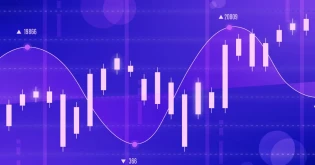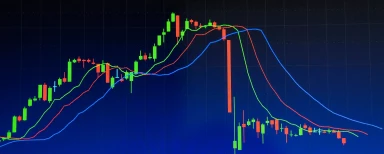-
Hedging is like a financial strategy that financial backers should understand and use since it accompanies a lot of advantages. It acts as an investment to keep your money safe from potentially risky situations that could cause it to lose value.
Though, Hedging doesn’t necessarily mean that the investments won’t lose value. Instead, if it happens, the losses will be moderated by gains in another investment. Thus, how about we plunge into the universe of hedging and hedging techniques that make it work in finance on this informative adventure?
Suggested read: What is hedging
Different Types of Hedges - A Quick Overview
Let's look at the three main kinds of hedges: natural hedges, derivative hedges, and cross hedges. So, let’s take a quick glimpse:
Derivative Hedges
A financial derivative is a contract derived from the cost of a fundamental security. Derivatives include options, swaps, and futures, among others. Due to the asymmetric risk that derivatives provide, hedge funds invest in them.
Let's say a stock currently trades at $100, but the manager of the hedge fund anticipates a rapid increase. By buying 1,000 shares outright, they risk losing $100,000 if their speculation is wrong and the stock collapses. Instead, the manager purchases a call option on 1,000 shares for a tiny fraction of the share price. They have the option to acquire the stock at the current price at any time before a predetermined future date as a result of this.
If their supposition is right and the stock spikes, they practice the choice and create a quick profit. Assuming that they're off-base and the stock remaining parts level or worse, breakdowns, they essentially let the choice lapse and the loss is restricted to the little premium paid for it.
Natural Hedges
Investors can make different investments to lower the risk of a particular investment using natural hedges, This strategy depends on the notion that a fruitful second investment can check a unique investment, as well as the other way around.
Investors use natural hedges to balance risks in one environment by putting themselves at risk for an alternative investment that is likely to make money if the risk is realized. Additionally, it is a simpler method of hedging than employing sophisticated financial strategies like derivatives.
It's likewise basic to comprehend that putting resources into two distinct financial securities is a necessity of the natural hedging idea. In contrast, hedging accomplished by making two contrasting investments in the same security is different. Natural hedging is not what happens when investors, for instance, purchase stock in a company and then use that stock as a hedge against risk by creating the option to sell.
Cross Hedges
The Cross-hedging strategy helps investors buy two financial assets with comparable price movements to offset the financial risks associated with the former with the financial rewards of the latter. Using this strategy, investors buy comparable future contracts with comparable price movements.
A thorough analysis of the connection between the selected instrument and the risk being hedged is necessary when utilizing cross-hedges. Since the correlation between the instruments may fluctuate over time, they may also create additional basis risk, even though they provide flexibility in the lack of direct hedging options.
Suggested read: Steps to Start a Hedge Fund
In-depth Exploration of Hedging Techniques
Generally, stock market hedges fall into three categories: forward, future, and options. So, here in this section, we will discuss the hedging techniques in depth.
Forwards Contract Hedging
Forward contracts and futures contracts are comparable as they are tailored agreements between two parties. They entail buying and selling of an asset at a fixed cost and later on. Forward contracts provide investors with a way to lock in an asset's price and protect themselves from future price fluctuations.
These are just a few of the numerous hedging techniques available to investors. Every strategy has advantages and disadvantages, so before choosing a system, investors should carefully consider their investment goals, the state of the market, and their risk tolerance.
Futures Contract Hedging
A futures contract resembles a conventional contract that sets a decent value, a particular sum, and a clear date for trading an underlying asset. It includes two separate gatherings meeting up to make this arrangement.
Futures contracts can incorporate different sorts, like those connected with monetary standards, like forwards. However, futures contracts may not be the best option for trading stocks, even though they are effective for trading currencies and commodities. Most majority of the futures markets are very liquid, and they accompany fixed upfront trading expenses.
Options Hedging
Options give buyers the option—but not the obligation—to purchase or sell a resource at a predetermined price by a predetermined date similar to agreements. Investors can take control of their potential profits or safeguard themselves from losses through these contracts.
An investor who owns stock, for example, and wants to hedge against a drop in value, can buy a put option at a predetermined strike price. The options may be exercised, allowing the investor to sell the stock at the higher strike price if the price of the stock falls below the strike value.
Suggested read: Hedging Techniques in the Forex Market
Comparison of Hedging Techniques Based on Risk and Complexity
Businesses frequently deal with uncertainty in the ever-changing financial markets, which can negatively affect their bottom line. Hedging strategies are a type of risk management used to lessen the negative impact of market volatility.
It is critical to consider both the degree of risk reduction and the complexity of each strategy when considering hedging possibilities. Now, we are going to mention the various hedging strategies based on how well they control risk and how complicated they are:
Hedging Strategy
Risk Reduction
Complexity
Forward Contracts
Moderate
Low
Options
Variable
Moderate to high
Future Contracts
High
Moderate
Swaps
High
High
Natural Hedging
Low to moderate
Low
Forward Contracts:
Forward contracts allow companies to lock in future exchange rates while reducing risk to a considerable extent. They entail an agreement to purchase or sell an asset at a specified price and are rather straightforward.
Options Contracts:
The degree of risk reduction offered by options varies based on the selected approach. They have a moderate to high degree of complexity, but they can be very effective—especially for more advanced methods.
Futures Contracts:
At times as opposed to forward contracts, futures contracts provide a greater degree of risk reduction. However, because of standardized terminology and the need for a clearinghouse, they involve a moderate amount of complexity.
Swaps:
By enabling parties to swap cash flows, swaps provide a significant degree of risk reduction. They are, however, rather complicated financial products that frequently call for a thorough comprehension of the underlying assets and market dynamics.
Natural Hedging:
Natural hedging reduces risk to a low to moderate degree by matching cash inflows and outflows in various currencies or commodities. When compared to financial derivatives, it is rather easy.
Additionally, the type of underlying risk determines the hedging strategy that is selected. For example, financial derivatives can be used to control commodity price risk efficiently, but operational changes in global supply chains can be a superior way to address currency risk.
Conclusion
As a trader when you are using a variety of hedging techniques, you would wish to reduce your losses when investing. However, be sure you are also aware of the intricacies associated with different hedging techniques.
Traders and investors can reduce market risk and volatility by using hedging. It lowers the possibility of financial loss. Profits are the primary goal of investors, and market risk and volatility are inherent aspects of the market.
However, you are not in a position to protect your capital by controlling or manipulating markets. While hedging won't always prevent losses, it can significantly mitigate their effects. So, take every decision wisely!
















































